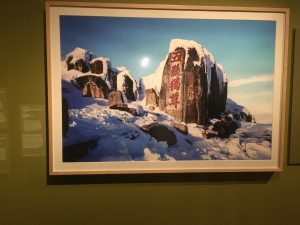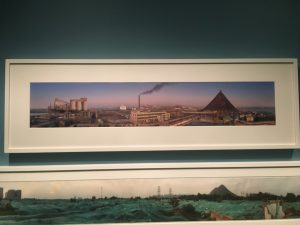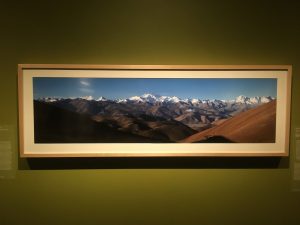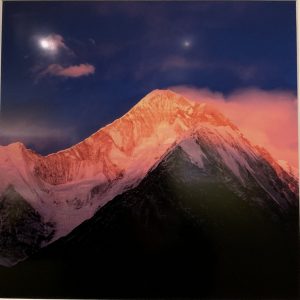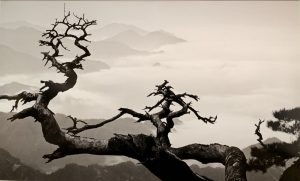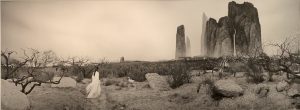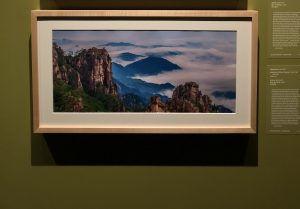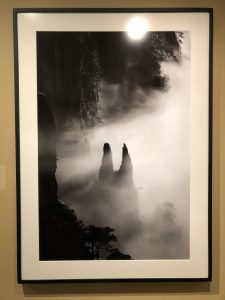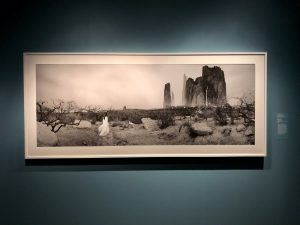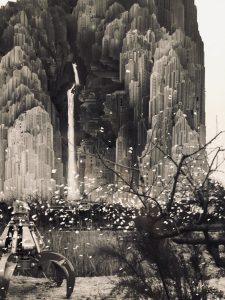The Art of the Mountain is a delightful photography exhibition by a number of talented Chinese photographers. Currently being host in the private gallery of the China Institute in Tribeca, New York.
The Exhibit contains a collection of stunning imagery of mountains, capture in its most appealing and compound way. From the collection, there is three pieces that stood out to me the most.
Lopsided Tree, taken in 2008 at Mountain Sanqing, Jiangxi by Lu Yanpeng (b. 1984)“When I cannot paint, I write poems to record my feelings. But When I have the camera , Is almost as if I could neither write nor paint so that I could focus all my emotions on “That single moment ” As Lu Yanpeng mentions in the description this particular series are poems. This photograph say a whole lot more than it shows at first glance it might appear simple and with out much to say about it, but take a second look. This frame is what i call a silent scream. The setting is simple yet professionally composed. The composition: The side of a mountain with a lopsided tree on top left corner, falling along down the curved line of the mountain across the frame creating a stylistic “S curve” diagonal filling the frame from top to bottom. Contrast of the dark Mountain and light sky. The Poem: One image says more than a thousand words, this is the photographer feelings of a particular mood of his life that we do not necessarily know, but we could stare at this image and dive into endless stories and feelings and make it our own story, perhaps a dream. Dreamy, fantasy, moody, melancholy, even horror are some of the many words I could say about this. Quite Inspiring.
Peach Blossom Colony No.1 , 2011, source images of the photo collage: Shanghai, Hong Kong, Taipei, and others. The subject of the peach blossom colony derives from the fiction “Peach Blossom Spring” written by the Eastern Jin dynasty Tao Yuanming. Based on a bitter scent for modernism and the materialism that possesses the new generation and has taken away the spiritual and naturistic side of our human side. At first glance, It amazed me since it looked as a fantasy painting. Taking a closer look I admired the details and shifted up and down emotions. This composition is represented in a panorama landscape. Earth, sky, field. In fist plane a lady wearing a white dress. She is facing the landscape contemplating the city in the distance from the contrast of nature. Perhaps she is a reminiscence of times or she is being lured into the city. Well balanced composition in my opinion. Trees or set of branches on each side almost as putting a parenthesis to frame the scene. The lady is standing in the left 2/4 lower section of the frame. In the opposite side is the mountain to balance the weight in the upper section. Now the key attraction here is the mountains. What at first glance look like simple mountains, are more than that. Probably the most meticulously editing part of this piece, the mountains are fuse with buildings or to be more specific, its a set of buildings fused into a mountain shape with a quite impressive detail.
Huangshan W25, 1991 by Wang Wusheng (b.1995) Taken at Lion Peak, Mount Huang. Another impressive composition with two rows of mountains were one is being hit by the light of the sun, while the others are on shade. Judging by the shadows on the rocks it seem to be at an early sunrise, since the light its at an 10 degree angle blocking the light for other mountains. The clouds, the fog is what made me stop for this one. The light from the sun is very bright hence the exposure for this shot had to be quite fast giving the opportunity of a couple of shots, but maybe he just waited for the right time to take it. The motion of the fog coming down the mountain it gives a feeling of the power of nature and the majesty of of creation and makes you think how small we are against the divine nature.

